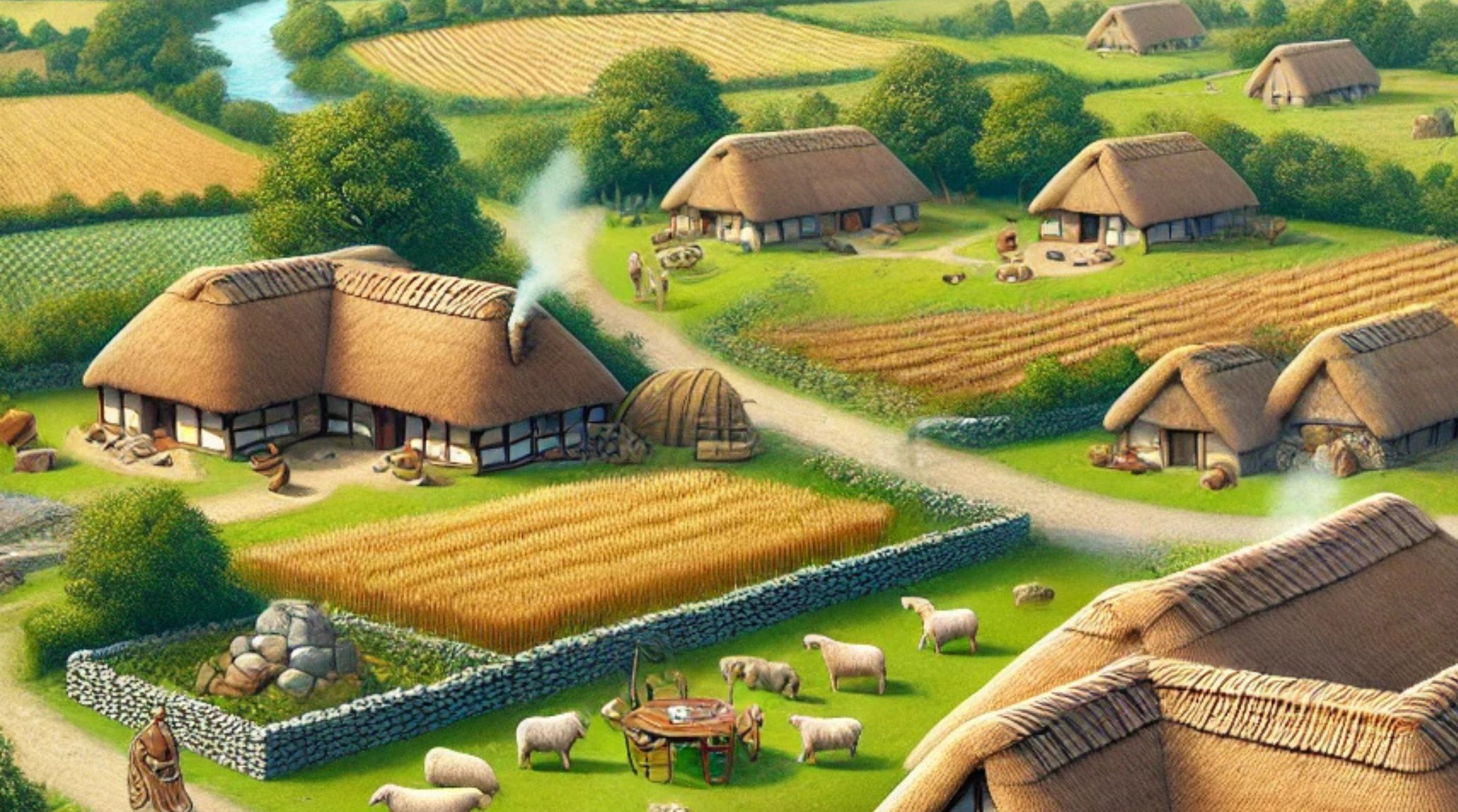
“
The Neolithic Era marked a transformative period in human history, characterized by the rise of Permanent Villages in the Neolithic Era. As societies transitioned from nomadic lifestyles to settled farming communities, they laid the foundation for modern civilization. This blog explores 20 facts about Permanent Villages in the Neolithic Era, shedding light on how these early settlements influenced agriculture, social structures, and cultural practices. From advancements in pottery and architecture to the significance of communal living, these facts highlight the profound impact of Permanent Villages in the Neolithic Era on the development of human societies and their lasting legacy today.1
1
”
Çatalhöyük, one of the earliest known permanent villages, featured houses made from clay and mud, encouraging neighborly interactions and fostering a strong sense of community among its residents.1
Neolithic villagers engaged in intensive agriculture, leading to the domestication of vital crops like chickpeas and lentils. These advancements laid the foundation for future farming practices and food security.2
Obsidian, a volcanic glass known for its sharpness, was essential for crafting tools and weapons. This valuable resource led to the establishment of important trade networks among neighboring villages.3
The invention of the potter's wheel revolutionized pottery-making in some regions, enabling the mass production of pots. This innovation became crucial for cooking, storage, and trade in Neolithic communities.4
Villages constructed communal grain storage facilities to ensure food supply stability. This practice promoted food security and encouraged collaboration among residents, strengthening community bonds.5
Megalithic structures, such as stone circles and burial mounds, were prominent in Neolithic landscapes. These monumental constructions served as ceremonial sites, reflecting spiritual beliefs and practices.6
Evidence of ritual feasting indicates communal meals played a significant role in strengthening social ties. Archaeologists discovered animal bones and pottery linked to large gatherings.7

Figurines like Venus statues show that Neolithic villagers had complex belief systems surrounding fertility. These artifacts provide insight into the spiritual and cultural priorities of agricultural societies.
Villagers practiced crop diversity by planting various species together, enhancing resilience against pests. This ancient sustainable agriculture foreshadowed modern practices that prioritize biodiversity.8
Sacred spaces within villages often featured altars or shrines dedicated to deities. Archaeological findings indicate these areas were central to spiritual life in Neolithic communities.9
The discovery of early symbols in pottery suggests Neolithic villagers developed rudimentary writing systems. These symbols conveyed important information and documented significant community events.10

Villagers engaged in textile production, weaving fabrics from wool and flax. This development provided clothing and allowed artistic expression through intricate patterns and dyes.
The shift to permanent villages led to the formation of kinship groups. Extended families lived together, creating support networks that reinforced community resilience and cohesion.11
Neolithic villagers developed irrigation systems to divert river water, enabling them to farm arid lands. This innovation significantly enhanced agricultural productivity and expanded farming capabilities.12
Archaeological evidence suggests some villages practiced shamanistic rituals, utilizing psychoactive plants. These practices likely played a vital role in spiritual healing and strengthening community bonds.13
Villages constructed specialized buildings for communal activities, such as granaries and assembly halls. This reflected the organizational skills of Neolithic societies, facilitating collaboration and governance.14
Many Neolithic villages designated areas for waste disposal, showcasing early environmental awareness. Proper waste management contributed to hygiene and health, crucial for growing populations' survival.15

The discovery of preserved seeds highlights ancient agricultural practices. Archaeologists found seeds dating back thousands of years, demonstrating villagers' knowledge of planting cycles and crop cultivation.
Villages developed unique cultural identities, reflected in distinct pottery styles and burial practices. These distinctions fostered a sense of belonging and pride, shaping social dynamics.16
The legacy of Permanent Villages in the Neolithic Era is evident in modern urban planning, where communal spaces and agricultural practices continue to evolve from these early settlements.17


